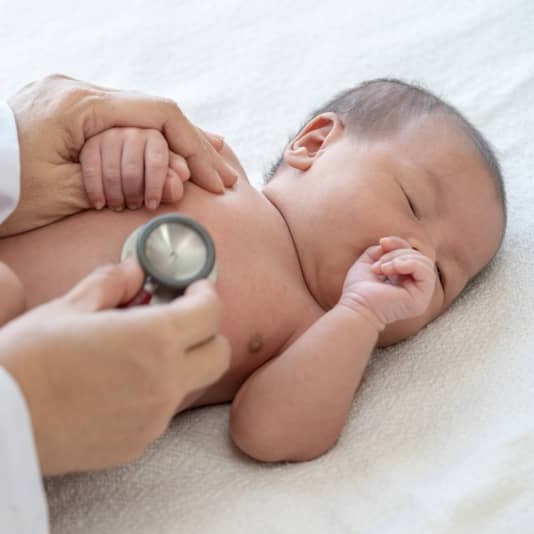Hirschsprung Disease
View or Print All Sections
Definition & Facts
Hirschsprung disease is a birth defect in which some nerve cells are missing in the large intestine, so a child’s intestine can’t move stool and becomes blocked. About 1 in 5,000 newborns has Hirschsprung disease.

Symptoms & Causes
Some infants with Hirschsprung disease have signs and symptoms of intestinal obstruction shortly after they are born. Common symptoms in older infants and children include chronic constipation and swelling of the abdomen. Certain genes increase the chance that a child will have Hirschsprung disease.
Diagnosis
Doctors diagnose Hirschsprung disease by taking a medical and family history, performing a physical exam, and ordering tests. Tests may include imaging tests, anorectal manometry, and rectal biopsies.
Treatment
Doctors typically treat Hirschsprung disease with a type of surgery called a pull-through procedure. In some cases, doctors recommend ostomy surgery followed by a pull-through procedure. Children with Hirschsprung disease most often feel better after surgery.
Eating, Diet, & Nutrition
Before Hirschsprung disease is diagnosed and treated, a child may develop problems with feeding, have a failure to thrive, or malnutrition. Talk with a doctor about what your child should eat and drink after surgery for Hirschsprung disease. Once they recover, children usually don’t need to follow a special diet.
Clinical Trials
The National Institute of Diabetes and Digestive and Kidney Diseases (NIDDK) conducts and supports clinical trials in many diseases and conditions, including digestive diseases. The trials look to find new ways to prevent, detect, or treat disease and improve quality of life.
Your Digestive System & How It Works
The digestive system is made up of the gastrointestinal (GI) tract—also called the digestive tract—and the liver, pancreas, and the gallbladder. The GI tract is a series of hollow organs joined in a long, twisting tube from the mouth to the anus.
Related Research
See more about digestive diseases research at NIDDK.
This content is provided as a service of the National Institute of Diabetes and Digestive and Kidney Diseases
(NIDDK), part of the National Institutes of Health. NIDDK translates and disseminates research findings to increase knowledge and understanding about health and disease among patients, health professionals, and the public. Content produced by NIDDK is carefully reviewed by NIDDK scientists and other experts.
The NIDDK would like to thank:
Ankush Gosain, M.D., Ph.D., Le Bonheur Children’s Hospital, University of Tennessee Health Science Center
